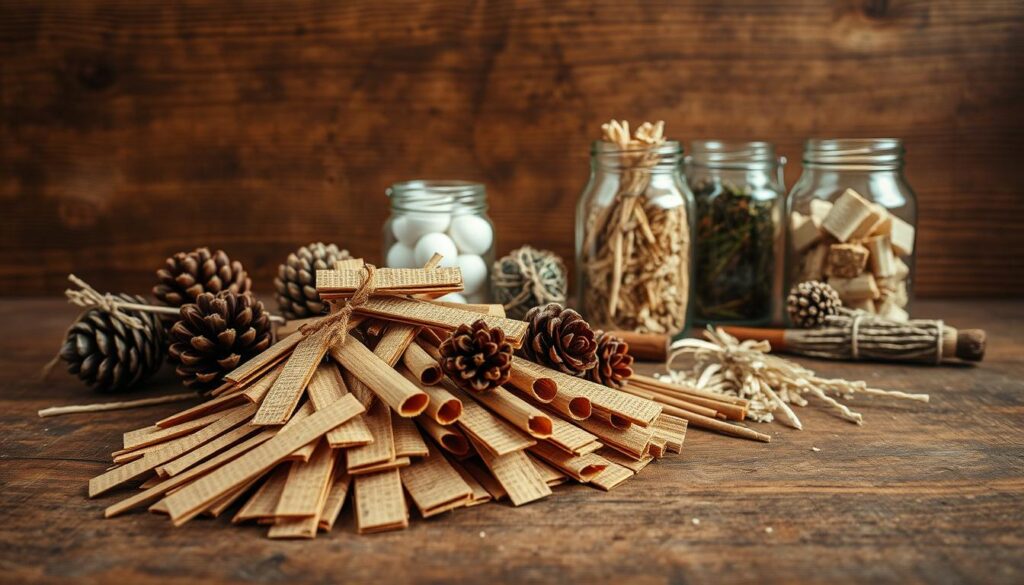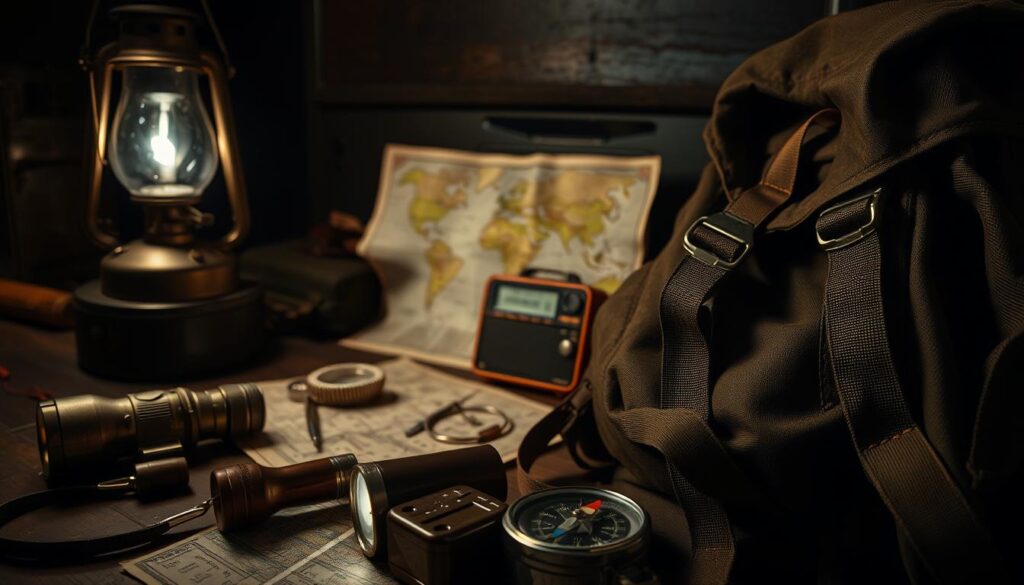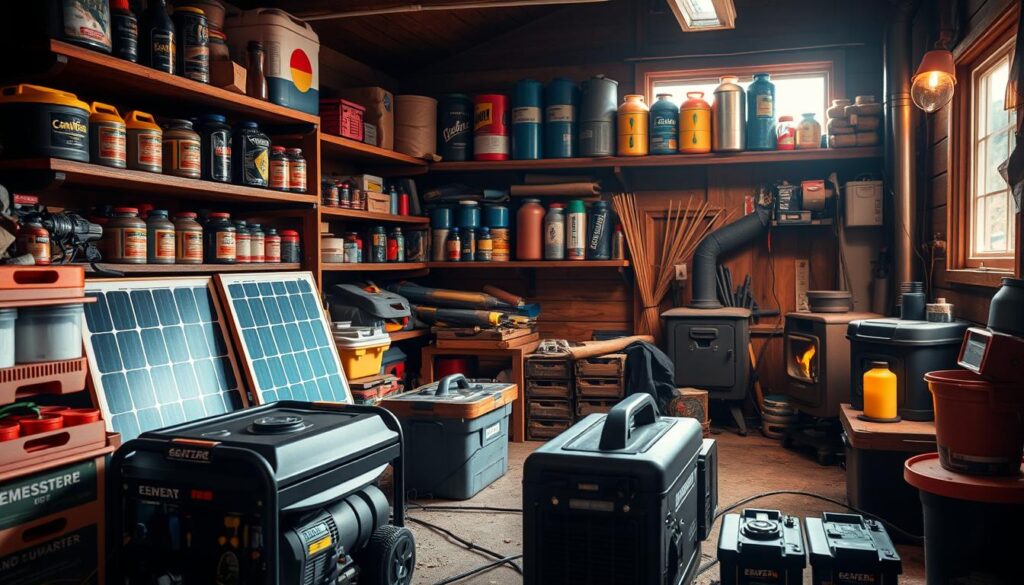Thinking back to my last camping trip, I remember how key a good fire starter is. There’s nothing like sitting by a warm flame on a cool night. It’s a time for sharing stories and enjoying nature.
Making your own fire starter logs is easy and saves money. With a few things from home, you can craft fire starters that light fires well.
Key Takeaways
- Learn how to make effective fire starter logs using common household items.
- Discover the best materials for creating natural fire starter logs.
- Understand the benefits of using DIY fire starters for camping or fireplace.
- Find out how to customize your fire starters for optimal performance.
- Get tips on storing and using your homemade fire starter logs.
What are Fire Starter Logs?
Fire starter logs make starting fires easy. They are small, simple to use, and work fast. This makes them great for camping, fireplaces, and wood-burning stoves.
Definition and Purpose
Fire starter logs are made to make starting fires easy. They use materials that light up quickly and burn well. This gives you a steady flame.
Benefits of Using Fire Starter Logs
Fire starter logs help a lot when it’s damp or cold. They are easy to use, efficient, and reliable. Some are even good for the environment, helping you reduce your impact.
Using fire starter logs means starting fires is easy. They are useful for fun or practical needs. Fire starter logs are a great tool to have.
Materials Needed for Making Fire Starter Logs
Making fire starter logs is easy. You just need to gather a few simple items. These items are key to making effective fire starters.
Common Supplies
Common materials include dryer lint, sawdust, wax, and cotton balls. You can find these in most homes or at local stores. Dryer lint burns well and sawdust adds bulk. Wax holds the log together and fuels it.
Here’s a quick look at what each material does:
| Material | Purpose |
|---|---|
| Dryer Lint | Highly combustible, serves as a base material |
| Sawdust | Adds bulk and helps with burn time |
| Wax | Binds the log together, provides additional fuel |
| Cotton Balls | Enhances ignition and helps the log burn longer |
Alternatives You Can Use
If you’re missing some items, you can use other things. Shredded newspaper or cardboard can replace dryer lint. Dried leaves or small twigs also work. For more ideas, check out Backwoods Home.
When picking alternatives, think about how well they burn. This affects your fire starter’s performance. By trying different materials, you can make natural fire starter logs that work well and are good for the environment.
Step-by-Step Guide to Creating Fire Starter Logs
Making fire starter logs is easy and only takes a few steps. You need some basic stuff and a little patience. First, get your materials ready, mix them, and then shape the logs.
Preparing the Materials
To start, gather dryer lint, sawdust, and wax. You can add shredded paper or small twigs for extra fun. Make sure everything is dry and ready to go.
Mixing Ingredients
Now, mix your materials together. A simple mix is dryer lint, sawdust, and melted wax. You can change the amounts to control how long they burn. Mix well until it’s all the same.
Molding and Shaping the Logs
After mixing, shape your logs. You can use a mold or shape them by hand. Make sure they’re tight and keep their shape. Let them cool and harden before you use them.
By following these steps, you can make great fire starter logs. Try different mixes and materials to see what works best for you.
Different Types of Fire Starter Logs
Fire starter logs are great for starting fires for camping, fireplaces, and wood stoves. They come in various types to meet different needs and likes.
Natural vs. Synthetic
Fire starter logs can be natural or synthetic. Natural fire starter logs are made from wood, sawdust, and other organic stuff. They’re good for those who want to be eco-friendly.
Synthetic fire starter logs might have paraffin wax or other man-made stuff. They offer different benefits and features.
Commercial Options
Commercial fire starter logs are easy to find in stores and online. They meet certain standards and often come with a performance guarantee. These logs are perfect for those who want a simple way to start a fire.
Homemade Variations
For a personal touch or to save money, making your own fire starter logs is a good idea. Homemade fire starter logs can be made to fit your needs. You can choose the size, what it’s made of, and even use local materials.
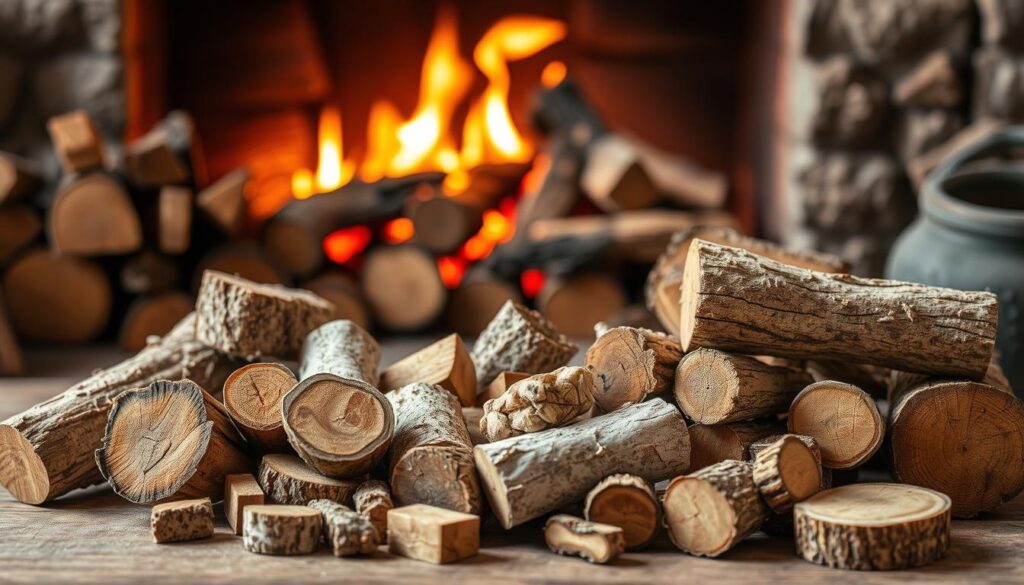
Tips on Storing Fire Starter Logs
To keep your fire starter logs effective, it’s important to store them right. Proper storage keeps them working well and safe to use.
Ideal Storage Conditions
Fire starter logs need a dry, cool spot, away from sunlight. Moisture and heat can make them less effective at starting fires.
- Store them in a well-ventilated area to prevent moisture buildup.
- Keep them away from direct sunlight, which can cause degradation.
- Avoid storing them in humid environments, such as basements or attics without proper ventilation.
How to Extend Shelf Life
To make your fire starter logs last longer, use airtight containers. This keeps them dry and protects them from the environment.
Also, keep them in a place with low humidity. This helps them stay effective for longer. By following these tips, your fire starter logs will always be ready to go.
Safety Precautions When Using Fire Starter Logs
To enjoy fire starter logs safely, follow important safety rules. These logs are handy but can be dangerous if not used right.
Fire Safety Tips
Always follow basic fire safety tips when using fire starter logs. First, read and follow the manufacturer’s instructions. This helps you know any special safety steps.
Also, keep a fire extinguisher or a bucket of sand nearby. This is for quick action if flames get out of control.
Be careful with sparks and embers. They can start fires in nearby flammable things. Make sure the area around your fire pit or fireplace is clear of anything that can burn.
Handling and Usage Guidelines
It’s key to handle and use fire starter logs correctly for safety. Always use dry hands when handling them. Moisture can mess up their performance.
When lighting a fire starter log, use a long match or lighter. This keeps you safe from the flame.
Never leave a fire starter log burning alone. Make sure the fire is out before you leave. If using them in a fireplace, open the damper for good ventilation. This helps avoid carbon monoxide buildup.
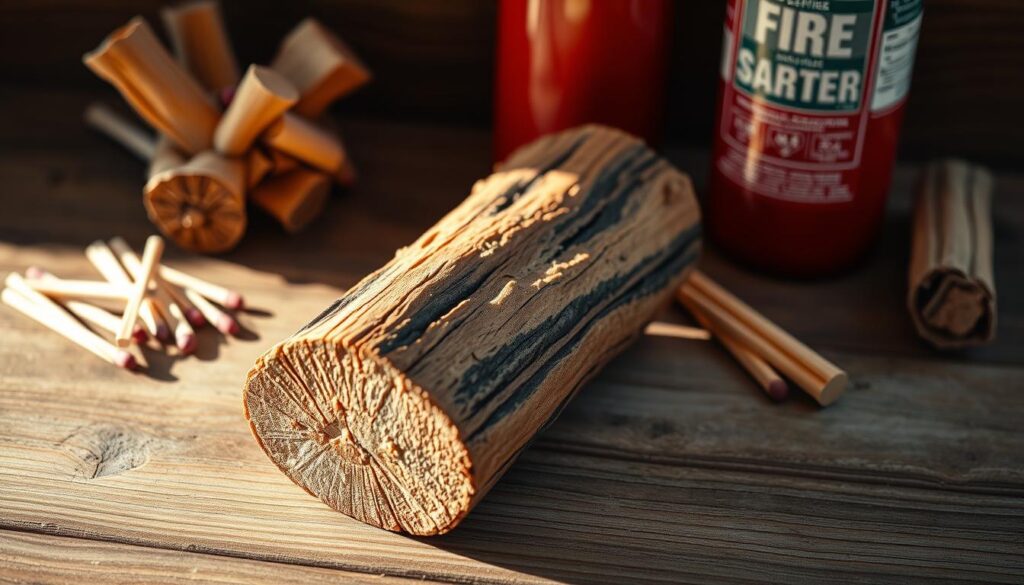
By sticking to these safety tips, you can safely use fire starter logs. Remember, safety is the top priority when dealing with fire.
Best Practices for Using Fire Starter Logs
Fire starter logs are key to starting a fire. But, they work best when used with other fire starters. Knowing how to mix them with kindling and tinder is essential.
Optimal Techniques for Igniting a Fire
To light a fire well, follow some key steps. Begin with dry, fluffy tinder to catch fire fast. Then, set kindling in a teepee shape over the tinder, leaving space for air.
Put the fire starter log in the center. Light the tinder first. When kindling burns well, add more logs to keep the fire going.
- Use dry, fluffy tinder to help the fire catch easily.
- Arrange kindling in a teepee shape to allow for good airflow.
- Place the fire starter log in the center of the kindling.
- Light the tinder to start the fire.
- Add more logs once the kindling is burning well to sustain the fire.
Combining with Other Fire Starters
Using fire starter logs with kindling and tinder boosts their power. This mix makes a strong fire that lasts longer. Make sure all materials are dry to avoid problems.
By using these tips and mixing fire starter logs with other starters, you’ll have a fire that lasts. This method makes fire starting safer and more reliable.
Environmental Considerations
Fire starter logs have a big impact on the environment. The materials used can harm our planet. It’s important to think about this.
Eco-Friendly Options
Choosing eco-friendly fire starters helps our planet. Eco-friendly fire starters are made from natural stuff. This includes recycled wood and natural wax.
Using sustainable fire starters cuts down on deforestation and air pollution. It’s a choice that helps our planet for the future.
Impact of Different Materials on Nature
The material of fire starter logs affects the environment. Logs from wood or coconut husks are better than synthetic ones.
Some materials release bad chemicals when burned. So, picking materials that are good for the planet is key.
“The most effective way to reduce our environmental footprint is by making conscious choices, such as opting for eco-friendly fire starters.”
Knowing the environmental impact of our choices helps. Choosing sustainable options makes our planet cleaner and healthier.
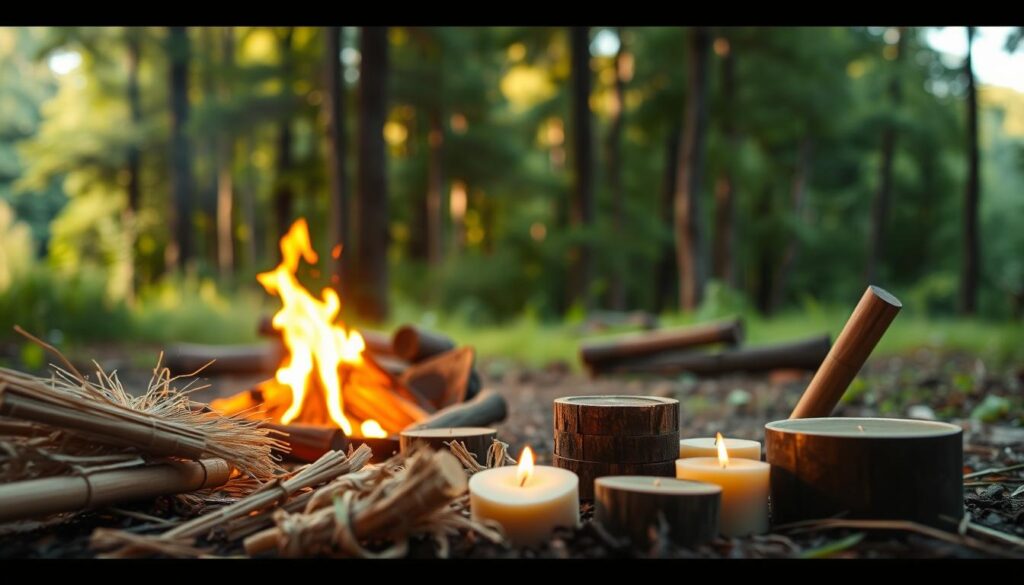
Troubleshooting Common Issues
When fire starter logs don’t work right, it can be a problem. Issues like dampness, poor quality, or wrong use can cause trouble. Knowing what goes wrong helps find ways to fix it.
Logs Not Igniting Properly
Logs not lighting up can have several reasons. Dampness is a big one, as wet logs won’t light. Keep your logs dry to solve this. Poor quality also matters; better materials work better. And, incorrect usage can mess things up too. Always use them as the maker says.
Here’s a table to help figure out why logs won’t light:
| Issue | Cause | Solution |
|---|---|---|
| Logs not igniting | Dampness | Store in a dry place |
| Logs not igniting | Poor quality | Use high-quality materials |
| Logs not igniting | Incorrect usage | Follow manufacturer’s instructions |
Ensuring Consistency in Performance
To keep your fire starter logs working well, follow the maker’s advice. Use the right amount and prepare them right. Consistency is key for reliable fire starting.
Here are some tips to make your logs work better:
- Use dry and well-seasoned materials.
- Avoid exposing the logs to too much moisture.
- Store the logs in a well-ventilated area.
By following these tips and fixing common problems, you can make your fire starter logs work better. Whether it’s dampness, poor quality, or wrong use, knowing the cause helps find a fix.
Frequently Asked Questions About Fire Starter Logs
Fire starter logs are a popular choice for starting fires. Many people have questions about how to use them. This section aims to answer common questions and provide expert advice.
Common Queries
Many people wonder how to store fire starter logs. It’s important to keep them in a dry, cool place. Avoid direct sunlight and moisture to keep them effective and last longer.
Another common question is about the safety of using fire starter logs. Always follow the manufacturer’s instructions and take precautions to avoid accidents. Keep a fire extinguisher or a bucket of sand nearby.
| Question | Answer |
|---|---|
| How long do fire starter logs last? | The longevity of fire starter logs depends on storage conditions and the type of materials used. Generally, they can last for several months to a year. |
| Can fire starter logs be used in indoor fireplaces? | Yes, fire starter logs can be used in indoor fireplaces, but it’s essential to ensure proper ventilation to avoid buildup of harmful fumes. |
Expert Insights
Fire safety experts say fire starter logs offer a consistent and controlled burn. This makes them great for both indoor and outdoor fire starting.
The use of fire starter logs represents a significant advancement in fire starting technology, providing a reliable and efficient way to ignite fires.
It’s also worth noting that you can make fire starter logs at home. This offers a cost-effective and customizable option compared to commercial products.
Conclusion: Enhancing Your Fire-Starting Skills
Creating and using fire starter logs can really boost your fire-starting skills. They make starting fires easy and quick. By trying out different materials and methods, you can find what works best for you.
Recap of Key Points
The secret to good fire starter logs is in the materials and how you make them. You can use natural or synthetic materials, or even make your own. Knowing the different types and their benefits is key. Also, keeping them stored and handled right is important to keep them working well.
Encouragement for Experimentation
Now that you know how to make and use fire starter logs, it’s time to try it out. Mix things up by using wax, sawdust, and dryer lint to make logs that fit your style. This will not only improve your fire-starting skills but also give you a feeling of pride and self-reliance.
FAQ
What are fire starter logs made of?
Fire starter logs can be made from dryer lint, sawdust, wax, and cotton balls. You can also try newspaper, cardboard, and other items that burn well.
How do I store fire starter logs to maintain their effectiveness?
Keep fire starter logs in a dry, cool spot, away from sunlight. Use airtight containers or a low-humidity place to keep them fresh longer.
What safety precautions should I take when using fire starter logs?
Always follow the maker’s instructions when using fire starter logs. Keep a fire extinguisher nearby and watch for sparks and embers.
Can I make my own fire starter logs at home?
Yes, you can make your own fire starter logs at home. Start by preparing your materials, mixing them, and molding into logs.
What are the benefits of using natural fire starter logs?
Natural fire starter logs are eco-friendly. They’re made from organic materials, which is better for the environment.
How can I troubleshoot common issues with fire starter logs?
If your fire starter logs won’t light, check if they’re damp or of poor quality. Follow the maker’s instructions and use quality materials for best results.
Can I use fire starter logs in combination with other fire starters?
Yes, you can mix fire starter logs with kindling and tinder. Use dry tinder and arrange kindling in a teepee shape for a better fire.
Are fire starter logs suitable for camping and outdoor use?
Yes, fire starter logs are great for camping, fireplaces, and wood-burning stoves. They’re compact and start fires quickly, even in damp or cold weather.

